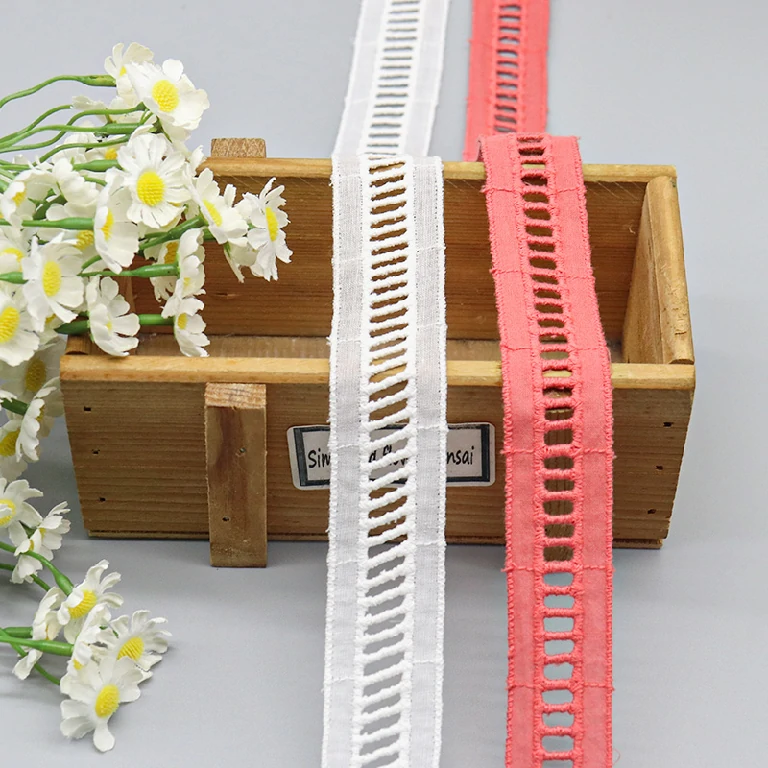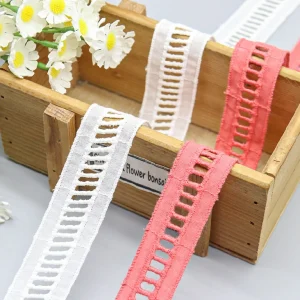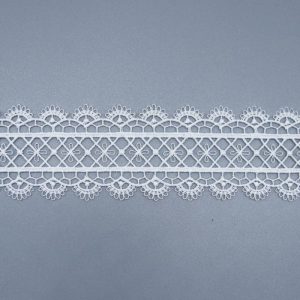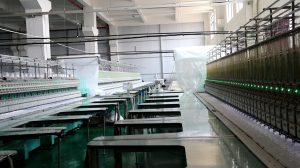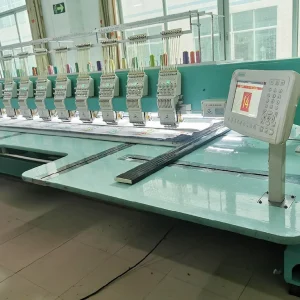Short Description:
This article compares floral embroidery lace and daisy water soluble lace from a B2B perspective, focusing on production cost, stability, raw material supply, and factory line adaptability to help manufacturers and wholesale buyers choose the optimal lace for mass production and sales.
Table of Contents
What are floral embroidery lace and daisy water soluble lace?
- Floral Embroidery Lace:
- Created by stitching intricate floral motifs onto a fabric base using traditional embroidery techniques, forming durable and textured lace patterns.
- Widely used in fashion, bridalwear, and home textiles for its classical aesthetic and tactile richness.
- Daisy Water Soluble Lace:
- Made by embroidering daisy patterns onto a water soluble stabilizer that is then dissolved in water, leaving free-standing lace designs without any fabric backing.
- Known for delicate, lightweight appearance and versatility in complex, 3D designs.
What is the difference between floral embroidery lace and daisy water soluble lace?
- Floral embroidery lace is a decorative fabric featuring embroidered floral patterns, while daisy water soluble lace is a type of lace where the base fabric dissolves in water, leaving behind a daisy-patterned lace.
How is water soluble lace made?
- Water soluble lace is created by embroidering a pattern onto a water-soluble fabric, which is then dissolved, leaving only the embroidered lace.
How do production costs differ between floral embroidery lace and daisy water soluble lace?
- Floral embroidery lace involves costs associated with fabric, thread, and labor-intensive embroidery processes; it usually demands more raw materials and finishing steps.
- Daisy water soluble lace primarily incurs costs from high-quality, specially formulated soluble stabilizers and precision machine embroidery; often faster to produce but may require more costly raw materials.
- For high-volume production, floral embroidery lace can sometimes be more economical due to fabric reuse, while water soluble lace commands higher unit prices given its specialized materials.
Which lace provides better stability and quality consistency in bulk manufacturing?
- Floral embroidery lace generally offers robust stability owing to its fabric base and dense stitching, enabling consistent batch production.
- Daisy water soluble lace, although visually delicate, relies on meticulous handling post-production to avoid damage; however, machine-controlled processes ensure uniformity for B2B scale orders.
What are the raw material supply considerations and risks for both lace types?
- Floral embroidery lace depends on consistent textile fabric and thread supply, which are widely available but subject to price fluctuations in cotton or synthetic yarns.
- Daisy water soluble lace requires specialized, sometimes niche, water soluble stabilizer materials that can pose sourcing challenges and higher procurement costs.
- Manufacturers must weigh supply chain stability and lead times when choosing between these lace types.
How well do factory production lines adapt to floral embroidery lace versus daisy water soluble lace?
- Floral embroidery lace fits well into conventional embroidery production lines using fabric feeding and standard finishing equipment.
- Daisy water soluble lace demands post-embroidery soaking and drying processes, requiring additional production steps and equipment adaptations.
- Factories integrating both may need flexible workflows to manage distinct handling and finishing requirements.
Which lace is more suitable for large-scale procurement and sales growth from a B2B standpoint?
- Floral embroidery lace is typically preferred for its balance of cost-efficiency, durability, and ease of integration into existing production and supply chains, making it ideal for large-volume orders.
- Daisy water soluble lace appeals to niche markets emphasizing delicate aesthetics and innovation, with higher price points limiting mass-market penetration.
- B2B clients should consider product positioning, target markets, and production capabilities when selecting between these lace types.
